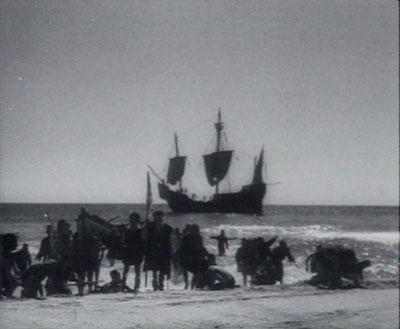En els últims quinze anys, els vídeos de Marcelo Expósito s'han mostrat en dotzenes de festivals, trobades, mostres, xerrades, conferències i exposicions de nombrosos països, entre les quals s'inclouen: Aperto (Biennale di Venezia, 1993), World Wide Video Festival (1992, 1994), Desmontaje (IVAM, 1993), Time and Tide (Newcastle upon Tyne, 1993), Pour un nouveau narrateur (Centre Georges Pompidou, París, 1993), Señales de Vídeo (MNCARS, 1995-97), Non Place Urban Realm (South London Gallery, Londres, 1999), Procesos documentales (Barcelona, 2001), Antagonismos (MACBA, Barcelona, 2001), 3rd Berlin Biennial (2004), Cine o casi cine (MNCARS, 2004), Marx Update (El Ojo Atómico, Madrid, 2004), Cinéma du réel (París, 2005), Spectacle, Pleasure Principle or The Carnavalesque? (Shedhalle, Zúric, 2005), If it's too bad to be true... it could be Disinformation (ApexArt, NY, 2005), From Mini-FM to Hacktivists: A Guide to Art and Activism (Govett-Brewster Art Gallery, Nueva Zelanda, 2005), Disobedience (Play-Gallery, Berlín, 2005), La hipótesis imaginativa (Espais, Girona, 2005), The People's Choice (Isola Art Center, Milán, 2006), Self-Education (National Center for Contemporary Art, Moscú, 2006), Remapping Mozart (Viena, 2006), Cities from Below (Pisa, 2006) i un llarg etcètera.

Treballo des de fa vint anys (exactament des del Bideoaldia a Tolosa en 1987) en línies d'activitat que hibriden l'escriptura crítica, l'organització i curaduria de trobades i altres tipus d'esdeveniments, la impartició de docència i la participació en seminaris, l'edició, la realització d'obra en diferents suports (vídeo, instal·lació, publicacions...)... No obstant això, concebo el conjunt de la meva activitat com la pròpia d'un artista que ha extret, de l'herència de les avantguardes històriques, conclusions poc amables per a la història i la institució artístiques: que es pot (de vegades s'ha de) fer un art que "no ho sembli", que la introducció del paradigma comunicatiu, la dimensió col·lectiva i el principi d'utilitat en l'obra d'art trenquen dràsticament amb les maneres de fer clàssics, i que els solapamients o concatenacions entre màquines artístiques i màquines polítiques són més norma que excepció en la tradició de les avantguardes (li malgrat qui li pesi).
A la dècada dels noranta, la meva activitat es va diversificar en la curaduria i organització d'activitats (principalment entorn del vídeo, el mail-art, la música experimental/industrial i altres formats per aquell temps no sobrecodificats), així com en una diversitat de suports, crec que influït, a estones innocentment, per la meva top-tingues particular: el posmodernisme crític, la crítica institucional, el site-specific, el feminisme, les tradicions polititzades i experimentals del cinema modern, i per descomptat el vídeo d'artistes i de grups polítics dels anys 60/70. Però més recentment, sobretot des de la meva vinculació creixent amb l'activitat dels moviments socials, des del cicle de desobediència civil a Espanya en la segona meitat dels noranta, del big-bang zapatista i la precipitació tormentosa del moviment global en 1999/2000, la meva dedicació s'aplica a reforçar per tots els mitjans possibles la creació de noves màquines que solapen art, política i activisme, perquè és així com l'art pot contribuir a construir un imaginari i un procés col·lectius de canvi. Estic també irremeiablement convençut que l'única manera possible de recuperar el (tan injuriat) principi avantguardista "art/vida" és treballar-nos esforçadament un art que no sigui una altra cosa que construcció innovadora de si. Crec que aquestes són algunes formes de produir vida feliç en un món que dóna veritable fàstic.